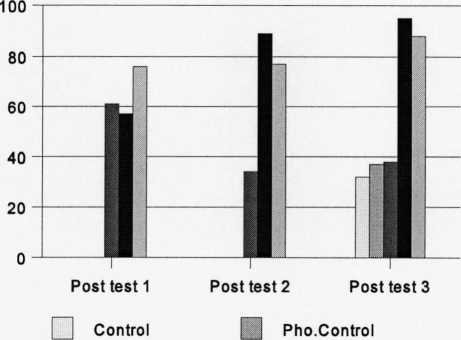7.4.2.2.5 Contrast task
Scoring criteria for the contrast task
Children’s knowledge was assessed for each of the four lexical items. The present task
included the question Did they provide appropriate contrasts ? For the present experiment
the contrasts were appropriate when they contrasted the target word with another from the
same semantic category. For example, appropriate contrast for the ostrich and mole was any
animal contrast, while appropriate contrast for the ladle was any cutlery contrast and for the
stool any furniture contrast. Responses were scored as correct and incorrect. Provision of
appropriate contrasts was scored as correct, while failure to provide appropriate contrasts
was scored as incorrect. Each child could score from 0-4. Qualitative analysis of children’s
contrasts was also carried out.
Analysis
More than half of the children provided appropriate contrasts for the target words across
testing. By considering children from each group, there were 104 responses if they provided
contrasts for all the four target words. Figure 7.28 shows that the Lexical contrast group
provided more contrasts than the other groups during post test 2 and 3, while no significant
differences were found during post test 1.
Figure 7.28 Total number of correct responses in the contrast task by group across
testing

H Oste-Definition I Le.Contrast
∣ ∣ Definition
252
More intriguing information
1. Gerontocracy in Motion? – European Cross-Country Evidence on the Labor Market Consequences of Population Ageing2. The name is absent
3. The name is absent
4. The duration of fixed exchange rate regimes
5. The name is absent
6. GENE EXPRESSION AND ITS DISCONTENTS Developmental disorders as dysfunctions of epigenetic cognition
7. Retirement and the Poverty of the Elderly in Portugal
8. O funcionalismo de Sellars: uma pesquisa histδrica
9. Cyclical Changes in Short-Run Earnings Mobility in Canada, 1982-1996
10. Announcement effects of convertible bond loans versus warrant-bond loans: An empirical analysis for the Dutch market